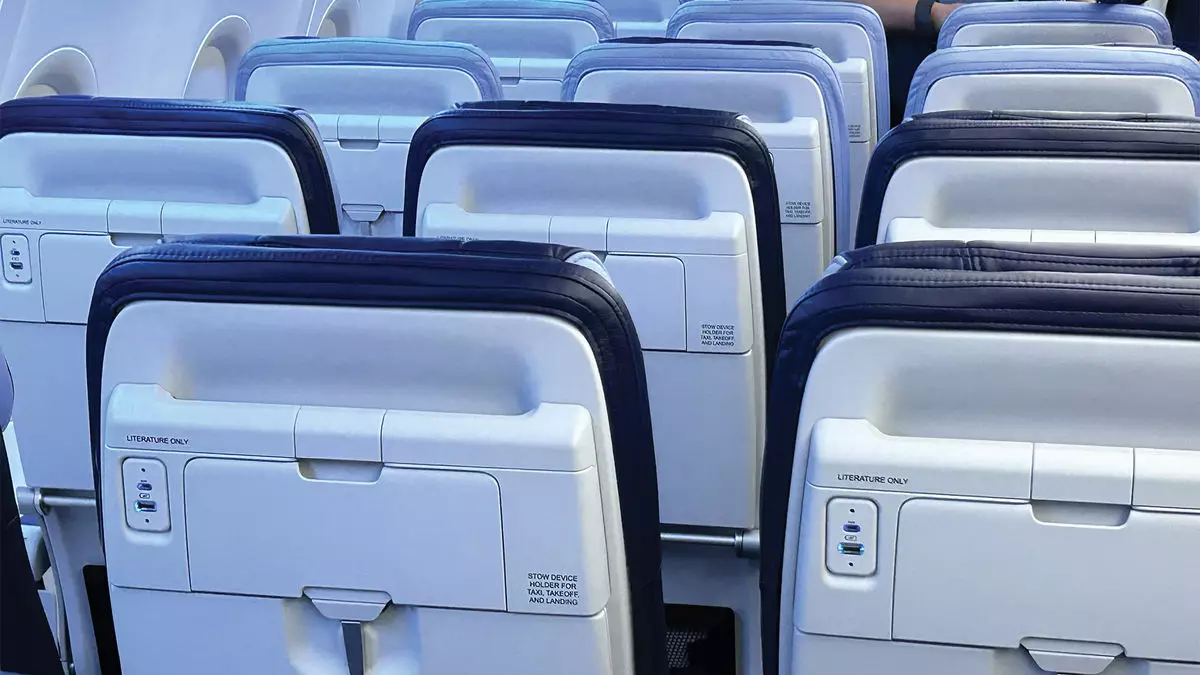In an industry often characterized by rapid shifts and unforeseen developments, Southwest Airlines has announced delays in the rollout of its extra-legroom seating. Initially set to reinterpret its fleet by March 2025, the airline now anticipates that the reconfiguration will not commence until mid-2025. This postponement has significant implications for customer experience, as travelers eagerly await features designed to enhance comfort during flights. The incorporation of these seats, however, will not be fully realized until 2026, when Southwest plans to further innovate its seating arrangements with assigned seating policies.
Altered Cabin Configurations and Customer Flow
The inclusion of extra-legroom seats represents a bold departure from Southwest’s traditional no-frills approach and reflects a growing emphasis on passenger comfort. Approximately one-third of its fleet will be outfitted with enhanced seating that boasts a spacious 34 inches between rows, aimed at appealing to an increasingly comfort-conscious flying demographic. However, to accommodate this change, standard seating on larger 737-8 aircraft will see a reduction in legroom—from 32 inches to 31 inches—aligning it with the smaller 737-7 planes.
This decision could evoke mixed reactions from loyal customers who appreciate Southwest’s budget-conscious offerings. On one hand, the expansion of legroom may attract new clientele seeking value-added experiences. On the other, existing customers might feel the impact of slightly reduced comfort in standard seating configurations. As these developments unfold, customer boarding dynamics will also shift; early boarders will gain access to extra-legroom seats on eligible flights—a tactical move that could incentivize purchasing behaviors related to boarding priority.
Pacing Through Certification and Retrofits
Ryan Green, Southwest’s executive vice president of transformation, outlined the airline’s plans for the retrofit process, projecting FAA certification for weight and balance in the first quarter of the upcoming year. However, the airline still awaits a crucial additional certification, the Supplemental Type Certificate, slated for approval in the second quarter. With a fleet of approximately 800 aircraft, Southwest aims to expedite retrofits at a pace of 50 to 100 planes monthly.
This ambitious plan reveals the airline’s commitment to revamping its fleet, but questions linger regarding operational logistics and passenger satisfaction during such transitions. Implementing extensive changes across various aircraft inevitably raises concerns about potential disruption to schedules and performance.
Beyond fleet reconfigurations, Southwest Airlines is also diversifying its service offerings through strategic partnerships and revised operational strategies. The airline plans to inaugurate an interline partnership with Icelandair on February 13, 2025, initially through Baltimore before expanding to other major hubs, including Nashville and Denver later in the year. Such partnerships could signify a pivotal shift for Southwest, promoting greater connectivity and route options for travelers while enhancing brand visibility on a global scale.
In addition, the integration of MGM Resorts into the newly branded in-house vacation packager, Getaways by Southwest, underscores the airline’s commitment to streamlining offerings for leisure travelers. Customers can expect not only increased accessibility to hotel bookings in Las Vegas but an intuitive approach to vacation planning that targets Southwest’s robust customer base.
From a financial standpoint, Southwest recently reported net earnings of $261 million for the fourth quarter, marking a stark recovery from a net loss of $252 million in the comparable period of 2023. Operating revenue increased to $6.9 billion, demonstrating a 1.6% uptick attributed to lower operational expenses, primarily due to reduced fuel prices.
For the entire fiscal year, Southwest’s revenue reported a growth of 5.3% from the previous year, signaling resilience in a competitive landscape. CEO Bob Jordan reaffirmed the airline’s trajectory towards enhanced profitability, demonstrating optimism with projected margins of 3% to 5% in the year 2025, as opposed to 1.2% in 2024.
Southwest Airlines is positioning itself for significant changes intended not only to facilitate customer satisfaction through enhanced seating configurations but also to bolster operational efficiency and financial performance in an evolving market landscape. As delays materialize and new offerings take shape, the airline’s ability to navigate these transitions will be crucial in defining its future trajectory.


Leave a Reply